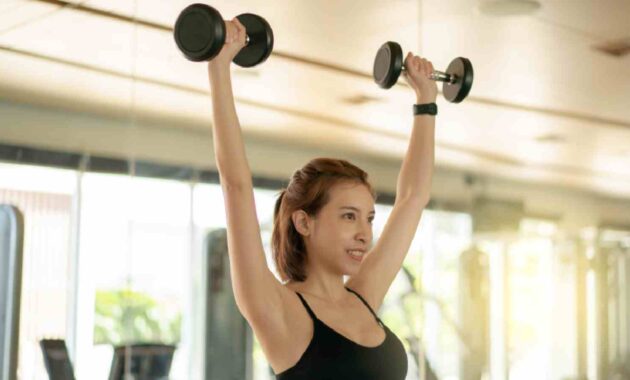When it comes to weight training, women often wonder should they lift heavy weights or go for the light ones. Both have their own benefits. A 2016 study published by the US National Library of Medicine showed that after eight weeks of strength training, people who lifted heavier weights with less repetitions had more strength. But more muscle-building activity was found in people who went for lower weights with high repetitions. Interestingly, you can also go for lightweight training for weight loss.
Lightweight training can be defined using the rating of perceived exertion (RPE) scale, says fitness expert Varun Rattan. This scale will allow you to gauge your workout’s intensity based on your strength and endurance. But what might be “light” for your friend could be heavy for you. So, it’s all about how hard you feel your body is working. When your effort level hits 4 to 5 on this scale, it means you are in the “light” zone.

Lightweight training for fat loss
Many know that lightweight training can help to build muscular endurance and strength, leading to better functional fitness in daily life. So be it carrying grocery bags or washing your car, you can do all that more easily. Rattan says lightweight training can also be effective for weight loss while minimising the risk of injuries. This is because it helps to elevate your metabolic rate both during and after the workout, leading to increased calorie burn. But for optimal fat loss results, try to combine lightweight training with other forms of exercise, such as cardiovascular activities. You should also follow a nutritious diet to fuel your workouts and aid in recovery.
Tips to do lightweight exercises
To perform lightweight exercises, choose a weight that allows you to do 15 to 20 repetitions with good form, the expert tells Health Shots. Maintain a controlled and steady pace, focusing on the muscle being worked on. If you are new to weight training, you can always ask an expert for some help and guidance.
Here are some lightweight training options:
1. Shoulder press
• Begin by standing tall, keeping your feet shoulder-width apart.
• Hold a dumbbell in each hand at shoulder level with your palms facing each other. This is your starting position.
• Continue to press those weights upwards till the time your arms get fully extended overhead.
• When you reach the top of the movement, pause then slowly lower the weights back to the starting position.
You can perform three to four sets for 15 to 20 repetitions, but ensure your shoulders, elbows and wrists are in line when pressing the weights up. Do not lean back as you press the weights.

2. Seated row
• Sit on the rowing machine with your knees slightly bent and feet on the footplates.
• Lean forward from your hips to hold the bar while keeping your back straight.
• Push with your legs first then lean back to a 90-degree angle while bringing the bar towards your stomach.
• Squeeze your shoulder blades together and stay like that for a second. Return to the starting position by extending your arms and bending at the hips.
As you do three to four sets for 15 to 20 repetitions, avoid rounding your back and don’t jerk the bar during the exercise.
3. Leg press
• To do leg press, start by sitting on the machine, placing your feet hip-width apart on the platform.
• Push through your feet, extending your legs without hyperextending your knees.
• Lower the weight by bending your knees towards your chest, ensuring your lower back remains in contact with the seat and does not round.
This also, you can perform three to four sets for 15 to 20 repetitions.
Lightweight training is not all about lean muscles. If you don’t want to do cardio exercises back-to-back, you can always slip in lightweight training for weight loss.
#Lightweight #training #weight #loss #Effective
